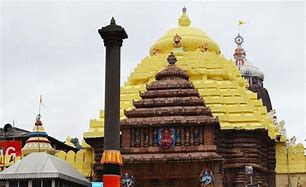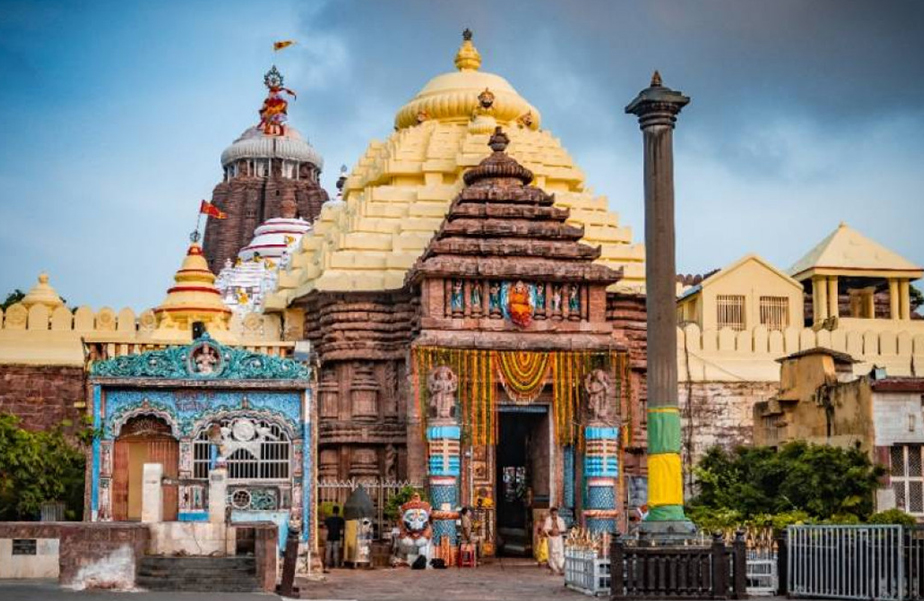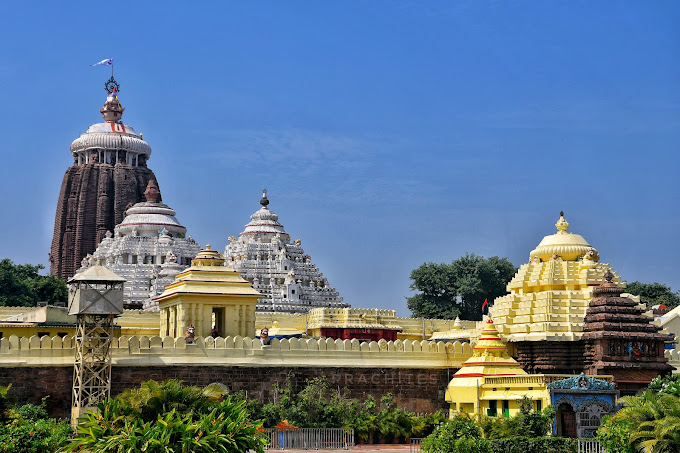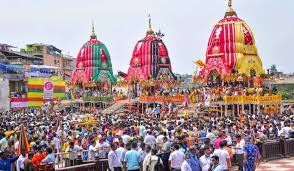


Puri
Puri, the
coastal city of Odisha, popularly known as Jagannath Puri is the city of
Jagannath ji which is another name of Krishna. Puri is known for its beautiful
golden Beaches. In this corner of
eastern coastline of Odisha, there are many places of historical and cultural
importance. The other places of tourist attraction in this area are the Sun
Temple at Konark, the Beaches of Gopalpur, the Chilka Lake, and off - course
the capital city of Bhubneshwar which is the place of ancient Maha-lingraj
Temple and Dhauligiri Stupa where the Kalinga War was fought by Ashoaka, the
great, who later went in to repentance for the devastating war and became a
devotee of Buddha and contributed hugely in propagating Buddhism. ..
Puri or Jagannath Puri is one of the Char Dham pilgrimage sites for Hindus. It is a coastal city in the state of Odisha . It is situated 60 kilometres south of Bhubaneswar. Puri is known by several names since the ancient times,
and was locally known as "Sri Kshetra" and the Jagannath temple is
known as "Badadeula".
Puri
is known not only for its magnificent Jagannath Temple but also for a very smooth
beachfront stretching to about 5 Kms with many hotels facing the sea.
Swargadwar (Gateway to Heaven), located near the Beach is considered a sacred
spot. The Beach comes alive in the evenings with vendors and tourists.
Nearby,
the majestic Jagannath Temple, standing on the Grand Road or Bada Danda is the
epicenter of Oriya spirituality. The Temple’s spire, with its flag atop, can be
seen as far as 7 Kms away gracefully standing out against a blue skyline and
green coconut trees. The
height of Jagannath Temple is around 1000 feet.
Never
forget to take Khichdi Prasad, a famous Odia dish served at the Puri
Temple as a part of the maha bhog made to Lord Jagannath.
The
economy of Puri is dependent on the religious importance of the Jagannath Temple. The 24 festivals, including 13
major ones, held every year in the temple complex contribute to the
economy; Ratha Yatra and its related festivals are
the most important which are attended by millions of people every year.
Puri is a significant part of the "Krishna pilgrimage circuit" which
also includes Mathura, Vrindavan, Govardhan, Kurukshetra, Nathdwara and Dwarka.
.In the temple's historical records it is mentioned that in
the Brahma Purana and Skanda Purana it is stated that the temple was built by
the king Indradyumna of Ujjayani.
From
1205 AD onward, there were many attacks on the city and its temple
by Muslims of Afghan and Moghul descent, known
as Yavanas or foreigners. In most of these attacks the idols were
taken to safe places by the priests of the temple. Destruction of the temple
was prevented by timely resistance or surrender by the kings of the region.
However, the treasures of the temple were repeatedly looted.
Puri
is the site of the Govardhana Matha, one of the four cardinal institutions established by Adi Shankaracharya, when he visited Puri in 810 AD,
and since then it has become an important divine centre; the others being
those at Sringeri, Dwarka and Jyotirmath.
In
the 16th century, Chaitanya Mahaprabhu of Bengal established the Bhakti movements of India, now known by the name the Hare Krishna
movement. There is
also a matha of
Chaitanya Mahaprabhu here known as Radhakanta Math.
In
the 17th century, for the sailors sailing on the east coast of India, the
temple served as a landmark, being located in a plaza in the centre of the
city, which they called the "White Pagoda" while the Konark Sun Temple, 60 kilometres away to the east of Puri, was known as the
"Black Pagoda".
Jagannath Temple at Puri
The
Jagannath Temple at Puri is one of the major Hindu temples built in the Kalinga style of
architecture. The temple tower, with a spire, rises to a height of 58
metres (190 ft), and a flag is unfurled above it, fixed over a wheel or chakra.
The
red flag, 14 feet (4.3 m), denotes that Jagannath ji is within the temple.
The
temple is built on an elevated platform of about 39,000 m2, 6.1 m
above the adjacent area.. There are four entry gates in four cardinal
directions of the temple, each gate located at the central part of the walls.
These gates are: the eastern gate called the Singhadwara (Lions Gate), the southern gate known as Ashwa Dwara (Horse Gate), the
western gate called the Vyaghra
Dwara (Tigers Gate), and the northern gate called the Hathi Dwara or (elephant gate).
These four gates symbolize the four fundamental principles of Dharma right conduct, knowledge, renunciation
and prosperity. There is a stone pillar in front of the Singhadwara,
called the Aruna Stambha {Solar
Pillar}, 11 metres in height with 16 faces, made of chlorite stone; at the top
of the stamba an elegant statue of Aruṇa (Sun) in a prayer mode is mounted. This pillar was
shifted from the Konarak Sun Temple. The four gates are decorated with
guardian statues in the form of lion, horse mounted men, tigers, and elephants
in the name and order of the gates.
According
to historical records the temple was started some time during the 12th century
by King Chhodaganga of the Eastern Ganga dynasty. It was completed by his
descendant, Anangabhima Deva, in the 12th century. The wooden images of
Jagannatha, Balabhadra and Subhadra were then deified here. The temple was
under the control of the Hindu rulers up to 1558. Then, when Orissa was
occupied by the Afghan Nawab of Bengal, it was brought under the control of the
Afghan General Kalapahad. Following the defeat of the Afghan king by Raja Mansingh, the General of Mughal emperor Akbar, the temple became part of
the Mughal empire till 1751. Subsequently, it
was under the control of the Marathas till 1803. During the British Raj, the
Puri Raja was entrusted with its management until 1947.
Ratha Yatra at Puri
The
Jagannath Temple triad are normally worshipped in the sanctum of the temple at
Puri, but once during the month of Asadha, rainy season of Orissa, usually in June or July, they
are brought out on the Bada Danda, the main street of Puri and taken over a
distance of 3 kilometres to the Gundicha Temple in huge chariots allowing the public to have darśana . This festival is known as the Ratha Yatra, meaning
the journey (yatra) of the
chariots.
The Rathas are huge wooden structures provided
with large wheels, which are built anew every year and are pulled by the
devotees.









